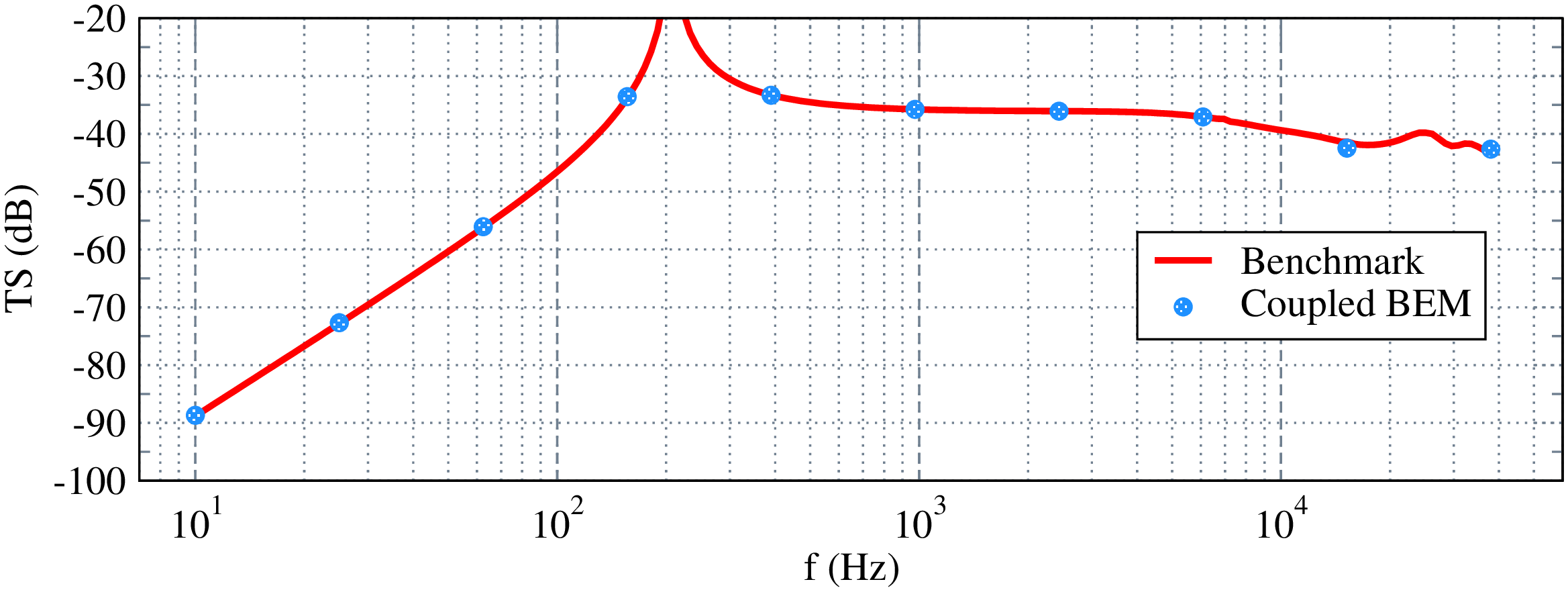Boundary-element method to analyze acoustic scattering from a coupled swimbladder-fish body configuration
A model for computing acoustic scattering by a swimbladdered fish with coupling to surrounding fish tissue that is assumed to behave as a homogeneous fluid, is presented. Mathematically, this corresponds to considering the problem of two penetrable scatterers immersed in a homogeneous medium, one of which is wholly embedded in the other. The model is formulated in the frame of boundary integral equations whose solution is achieved using the Boundary Element Method (BEM) for a planar triangle mesh. The numerical implementation is verified against benchmark solutions reported in the literature. The model is then applied to a specimen of \textit{Merluccius hubbsi}, whose morphometry was determined by CT scanning, for evaluating its forward and backscattering responses. From the acoustic scattering viewpoint, the swimbladder is considered as a gas-filled object while the flesh constituting the fish body acts like a weak scatterer. The numerical results suggest the swimbladder and the fish body responses, when fully coupled, can lead to substantial differences with respect to the simplified models normally in use in the area of aquatic ecosystem research.
PDF Abstract